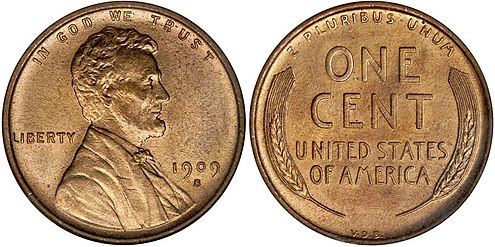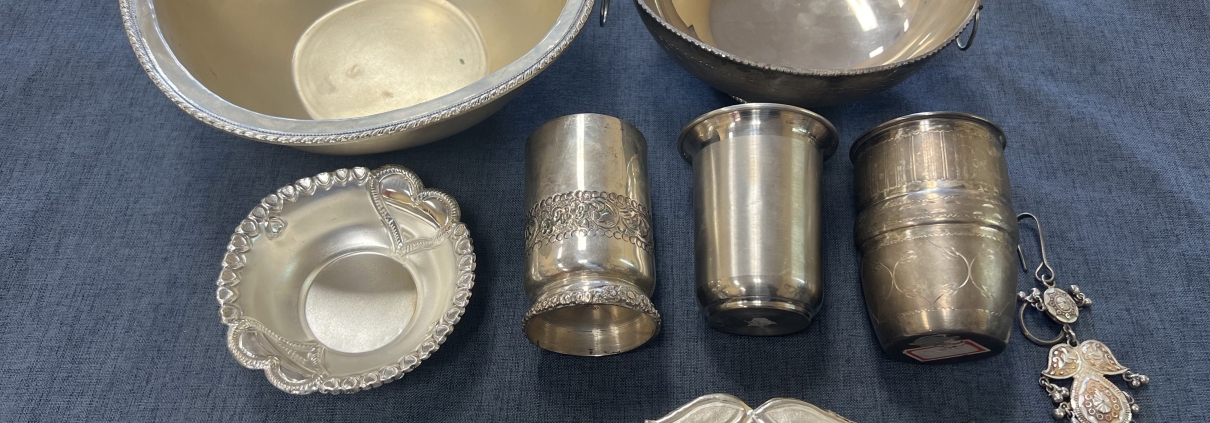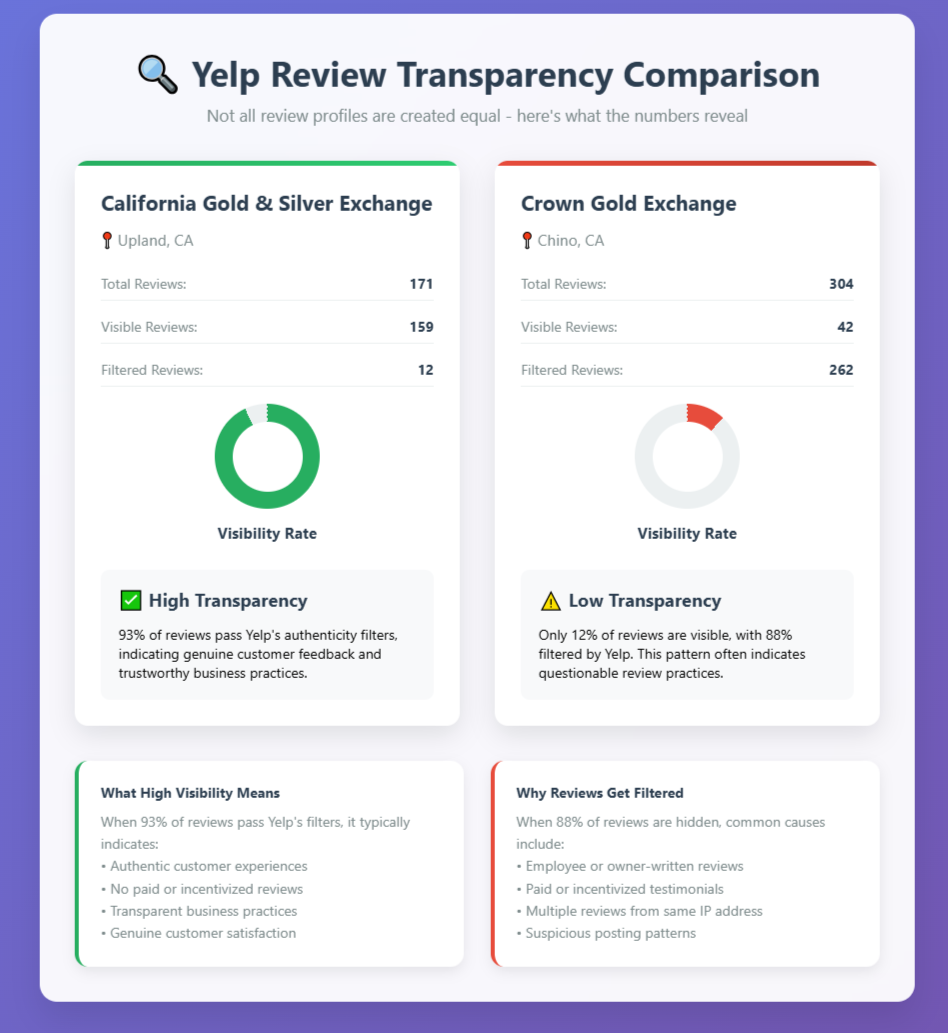We have received your message. If you indicated that you would like to make an appointment, we will reach out to you shortly.
When you sell gold to us, we will explain every step of the process to help you understand how selling gold works. With your XRF Precious metals Analyzer, we can test your gold to know exactly what purity your gold contains. This helps us assess your gold to give you the most when you sell.
The Complete Penny Value Guide: What Your Cents Are Really Worth
Seen those viral videos claiming your pocket change is worth thousands? Here’s the honest truth about penny values from actual coin dealers.
Before you make a trip to sell your pennies, learn which dates and varieties actually have collector value and which common pennies are worth exactly one cent. This guide will save you time, money, and disappointment by separating genuine collectible pennies from worthless hype.
Most “valuable penny” content online is designed to generate clicks, not provide accurate information. The reality is far different from what social media suggests. While some pennies do carry premium values, the vast majority of coins people bring to dealers are worth face value only.
Understanding which pennies have real collector demand requires knowledge of mintage numbers, condition requirements, and actual market prices. This comprehensive guide provides that information from the perspective of professional coin dealers who see these coins daily.
The Reality Check: Why Most “Valuable” Penny Videos Are Misleading
Viral penny videos use clickbait tactics that prey on wishful thinking. Headlines promising “$50,000 pennies in your pocket” generate millions of views, but they rarely mention that such coins are extraordinarily rare or require perfect condition.
The difference between theoretical value and actual market demand is enormous. A coin might have sold for $1,000 at auction once, but that doesn’t mean every similar coin is worth that amount. Condition, authenticity, and current collector interest all affect real-world values.
Most people dramatically overestimate their coins’ condition. What looks “pretty good” to untrained eyes is often heavily circulated in numismatic terms. Professional coin grading follows strict standards, and circulated coins rarely command premium prices.
Common misconceptions about penny rarity include believing that older automatically means valuable, that slight variations are worth money, and that YouTube prices reflect actual market values. These false beliefs lead to disappointment when people discover their collections aren’t worth what they hoped.
Wheat Pennies (1909-1958): Most Are Not Worth Much
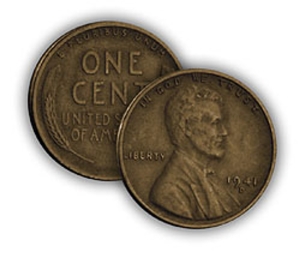 Wheat cents represent the best opportunity for finding valuable pennies in circulation. These copper coins, identifiable by wheat stalks on the reverse, are generally worth only, well, pennies, but can sometimes have genuine collector demand and modest premiums over face value.
Wheat cents represent the best opportunity for finding valuable pennies in circulation. These copper coins, identifiable by wheat stalks on the reverse, are generally worth only, well, pennies, but can sometimes have genuine collector demand and modest premiums over face value.
Even common wheat pennies from the 1940s and 1950s are worth 3 to 10 cents each in typical circulated condition. Better dates from the 1920s and 1930s can be worth $1 to $20, while key dates command serious money from collectors.
Early Wheat Cents (1909-1919)
The 1909-S VDB penny stands as the most famous collectible cent. With only 484,000 minted, examples sell for $500 to $1,500 depending on condition. The initials “VDB” appear at the bottom of the reverse, making identification straightforward.
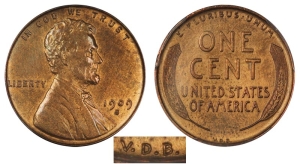
The 1909-S (without VDB) is also valuable, typically selling for $75 to $200. The 1914-D, with a mintage of just over 1.1 million, commands $150 to $500 in circulated grades.
Other dates from this era generally sell for 10 cents to $3 each, making them worthwhile to save but not retirement-funding discoveries.
Depression Era Pennies (1920s-1930s)
The 1922 “No D” variety represents a genuine error coin worth $500 or more. This resulted from over-polished dies that removed the mintmark entirely. However, many worn 1922-D pennies are mistaken for this variety when the mintmark is simply hard to see.
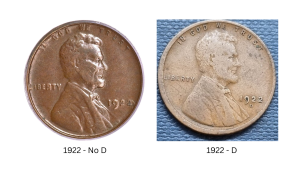
The 1931-S, with its low mintage of 866,000, sells for $75 to $150 in circulated condition. Most other Depression-era wheat cents are worth 5 to 25 cents each.
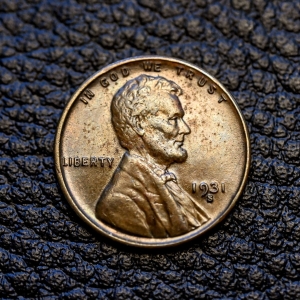
War and Post-War Wheat Cents (1940s-1950s)
The famous 1943 bronze penny represents one of numismatics’ greatest rarities. Only a few dozen exist, making them worth $100,000 or more. However, the common 1943 steel pennies that most people find are worth only 10 to 50 cents each.
The 1944 steel penny, another mint error, is extremely rare and valuable at $75,000 or more. The 1955 doubled die variety, showing
clear doubling in the date and lettering, sells for $1,000 to $2,000.
Most wheat cents from this period are worth 3 to 15 cents each in circulated condition.
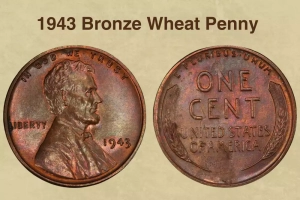
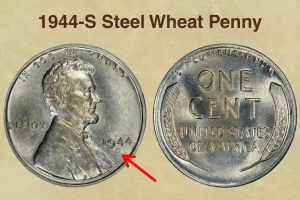
Condition Reality for Wheat Pennies
Professional coin grading uses specific terms that differ dramatically from casual descriptions. “Good” condition in numismatic terms means heavily worn with major design elements barely visible. “Fine” shows moderate wear, while “Extremely Fine” displays only slight circulation marks.
A wheat penny that looks “nice” to most people might grade as “Very Fine,” worth perhaps $2 for a common date. The same date in true “Uncirculated” condition could be worth $20 or more.
Cleaned coins lose significant value regardless of their apparent condition. Chemical cleaning or polishing destroys the natural surface that collectors prize, making such coins virtually worthless to serious buyers.
Memorial Pennies (1959-2008): The Hard Truth
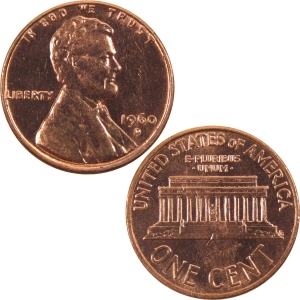 Memorial cents, featuring the Lincoln Memorial on the reverse, represent 50 years of coins with virtually no collector value. Despite countless online claims, 99.9% of these pennies are worth exactly one cent.
Memorial cents, featuring the Lincoln Memorial on the reverse, represent 50 years of coins with virtually no collector value. Despite countless online claims, 99.9% of these pennies are worth exactly one cent.
The massive production numbers during this period eliminated any possibility of scarcity-driven value. Billions of Memorial cents were produced each year, and most remain in excellent condition due to reduced copper content and improved minting techniques.
The Decades Breakdown
Every date from the 1960s is worth face value with no exceptions. The 1960s saw enormous mintages as the economy expanded and vending machines increased penny usage.
The 1970s continued this pattern. While a 1972 doubled die variety exists, it’s extraordinarily rare and not found in circulation. Regular 1972 pennies are worth one cent.
The 1980s and 1990s produced billions of pennies annually. Every single date is worth face value. No valuable errors exist in meaningful quantities, despite online claims about “rare” varieties.
The 2000-2008 period maintained massive production levels. Some “Wide AM” varieties exist where spacing differs slightly in “AMERICA,” but these carry minimal premiums and aren’t worth searching for.
Why Memorial Cents Aren’t Collectible
Collector interest drives value in numismatics. Memorial pennies lack this interest due to their abundance and similarity. Unlike wheat cents, which stopped production in 1958, Memorial cents were produced for decades in enormous quantities.
The copper content dropped to 2.5% after 1982, eliminating any precious metal value. Even the pre-1982 copper Memorial cents contain only about 2 cents worth of copper, hardly enough to justify collecting.
Shield Pennies (2010-Present): Current Production
Shield pennies, featuring a shield design on the reverse, represent the current penny design. All dates are worth exactly one cent with no collector premium.
New coin designs cannot achieve rarity status while still in production. The millions of Shield pennies minted annually ensure that none will become scarce in collectors’ lifetimes.
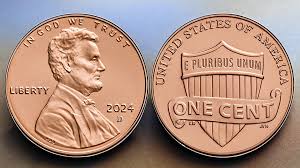
Error Coins: Separating Fact from Fiction
Real error coins result from mechanical problems during the minting process. Valuable errors include significant off-center strikes, double strikes, and clipped planchets where part of the coin is missing.
Major die cracks or breaks can create valuable varieties, but minor die wear is extremely common and worthless. The difference between a valuable die break and normal die wear requires expert identification.
“Errors” That Aren’t Worth Anything
Machine doubling appears as slight doubling in letters or numbers but results from mechanical vibration during striking. This common occurrence has no collector value despite online claims.
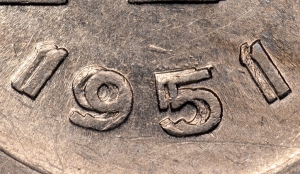
Post-mint damage from circulation, environmental exposure, or handling creates unusual appearances but no collector value. Coins damaged after leaving the mint aren’t considered error coins.
Worn dies create various visual effects as they deteriorate, but die wear is part of normal production and doesn’t create valuable varieties.
Discoloration from environmental exposure or chemical reactions might make pennies look unusual, but collectors avoid discolored coins rather than pay premiums for them.
The Grading Reality

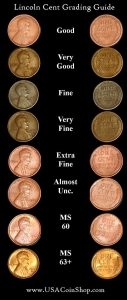
Professional coin grading follows precise standards developed over decades. The standard scale runs from Poor (P-1) through Perfect Uncirculated (MS-70), with most circulated coins falling in the Good through Fine range.
Condition affects value exponentially rather than linearly. A common wheat penny worth 3 cents in Good condition might be worth 25 cents inExtremely Fine condition and $5 in Uncirculated condition.
Environmental damage destroys collector value even when coins appear attractive to untrained eyes. Cleaning, polishing, or chemical treatments eliminate the original mint surface that collectors require.
What to Do With Your Pennies
Before visiting a coin dealer, conduct an honest assessment of your collection. Separate wheat pennies from Memorial and Shield cents. Check dates on wheat pennies against key date lists. Evaluate condition realistically by comparing to graded examples online.
Professional dealers typically purchase wheat pennies in any condition, genuine key dates, and bulk wheat penny lots. They rarely purchase Memorial or Shield pennies, common dates in poor condition, or cleaned and damaged coins.
Realistic Expectations
Wheat pennies offer modest collectible value ranging from 3 cents for common dates to hundreds of dollars for key dates in good condition. Memorial pennies (1959-2008) are worth face value only, regardless of date or condition. Modern Shield pennies should be spent rather than collected.
Rolling and transporting large quantities of Memorial pennies costs more in time and effort than any potential return. A $50 roll of Memorial pennies is worth exactly $50, minus the cost of gas and time to transport them.
What Dealers Actually Buy and Don’t Buy
Professional coin dealers purchase pre-1959 wheat pennies in any condition because collector demand ensures ready resale. Genuine key dates and scarce varieties sell quickly to established collector networks.
However, dealers typically don’t purchase Memorial pennies (1959-2008), Shield pennies (2010-present), or heavily worn common dates. Cleaned, damaged, or questionable coins also have no wholesale market.
The honest advice from professionals: Continue searching pocket change for wheat pennies, ignore Memorial cents entirely, and focus collecting efforts on coins with genuine scarcity. Enjoy numismatics as an educational hobby rather than expecting quick profits.
Take the Next Step With Your Penny Collection
If you have wheat pennies or pre-1930 dates, professional evaluation can provide accurate assessments of their value. Honest dealers offer educational consultations without pressure to sell.
Save yourself unnecessary trips by understanding that Memorial and Shield pennies, heavily worn coins, and damaged specimens have no collector value. Realistic expectations lead to more enjoyable collecting experiences and better financial decisions.
Remember that professional coin dealers see thousands of pennies monthly. Their assessments reflect actual market conditions rather than optimistic online valuations. Trust experienced professionals over viral videos when making collecting and selling decisions.
Turn Your Treasured Indian Silver into Cash: A Guide to Selling Wedding Gifts and Ceremonial Items
Have you received beautiful silver items as wedding gifts or inherited precious Indian ceremonial pieces that now gather dust in storage? You’re not alone. Many families hold onto these meaningful gifts without realizing their current market value.
At California Gold & Silver Exchange, we bridge the gap between sentimental value and practical needs. Whether you’re downsizing, need quick funds, or simply want to know what grandmother’s prayer dishes are worth, we provide honest evaluations that honor both the cultural significance and monetary value of your pieces.
Common Indian Silver Items We Purchase
Many families accumulate beautiful silver pieces through Indian and Sikh wedding traditions. These items hold cultural significance and genuine monetary value. Here’s what we regularly evaluate and purchase:
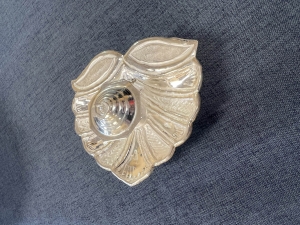
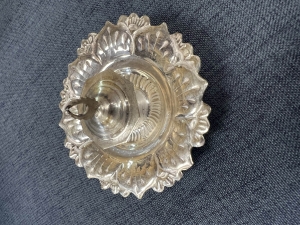
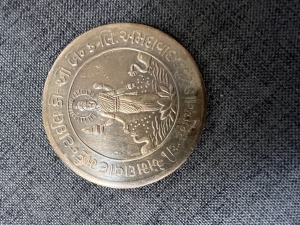
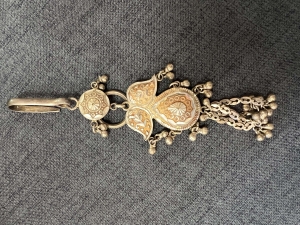
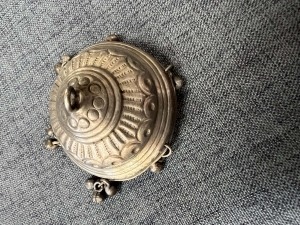
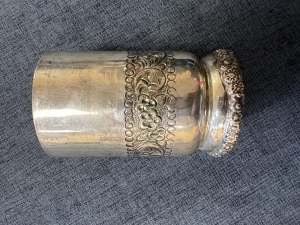
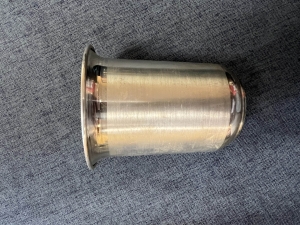
Wedding Gift Silver
- Decorative serving trays and platters
- Ornate bowls and cups
- Silver-plated or solid silver jewelry boxes
- Ceremonial serving utensils
- Decorative figurines and sculptures
Religious and Ceremonial Items
- Prayer dishes and offering plates – Used in daily worship and special ceremonies
- Incense holders and burners – Beautiful pieces often featuring intricate designs
- Temple accessories – Small silver items used in home shrines
- Trinkets and decorative pieces – Ornamental items gifted during celebrations
Jewelry and Personal Items
- Traditional silver jewelry pieces
- Hair accessories and ornaments
- Small decorative items and keepsakes
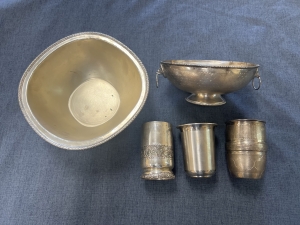
Our Professional Silver Testing Process
Getting fair value starts with accurate testing, so we use three proven methods to determine your silver’s exact purity and worth.
Our experienced appraisers start with visual inspection, examining each piece for hallmarks, stamps, and quality indicators that reveal information about the item’s origins and likely silver content.
We use precise nitric acid tests that react differently with various silver purities. A small drop applied to an inconspicuous area creates a specific color reaction. Genuine sterling silver produces a creamy white reaction, while lower purities show darker colors. This method gives us exact purity percentages within minutes.
For valuable or delicate pieces, we use XRF (X-ray fluorescence) analyzers that scan the metal’s composition without any physical contact or damage. These professional-grade instruments provide instant, accurate readings of silver content down to decimal points.
Every item gets carefully weighed on certified scales to ensure accurate calculations based on current silver market prices.
Understanding Silver Purity in Indian Items
Not all silver is created equal. Indian pieces typically fall into these categories:
Sterling Silver (92.5%) – Premium quality, often stamped “925”
Coin Silver (90%) – Traditional ceremonial standard
Decorative Silver (70-85%) – Common in ornamental pieces, still valuable
Silver-plated Items – Base metal with silver coating, has different value
Why Indian Silver Requires Special Expertise
Indian silver craftsmanship differs significantly from Western pieces. Traditional artisans often worked with specific purity standards that don’t match modern hallmarking systems. Many beautiful ceremonial items lack stamps entirely, yet contain substantial silver content.
We’ve developed expertise specifically in evaluating:
- Unmarked traditional pieces that other dealers might undervalue
- Regional variations in silver content and craftsmanship
- Religious items with unique alloy compositions
- Antique pieces where age adds both complexity and value
This specialized knowledge means you get accurate assessments rather than generic “scrap silver” pricing that ignores your items’ true worth.
Why Choose California Gold & Silver Exchange?
We respect the cultural and emotional significance of your items and handle each piece with care and reverence. Our process is completely transparent – we explain our testing step-by-step and show you exactly how we determine your items’ value.
Our prices reflect real-time precious metals market rates, typically offering 85-95% of current spot silver prices depending on item purity and condition. We update our pricing multiple times daily to ensure you receive maximum value.
You can bring your items in for a free assessment with no pressure to sell. We’re genuinely happy to provide information about your pieces’ value, whether or not you decide to sell.
What to Expect When You Visit
- Bring your items in – No appointment necessary during business hours
- Free evaluation – We’ll assess each piece and explain our findings
- Get a quote – Receive a fair offer based on current silver prices
- Decide at your own pace – Take time to consider our offer with no pressure
- Get paid immediately – If you decide to sell, walk away with cash the same day
Common Questions We Answer
“Will you damage my grandmother’s prayer set during testing?”
Never. Our electronic analyzers require no physical contact, and acid tests use microscopic amounts on hidden areas.
“What if my items aren’t marked with purity stamps?”
Most Indian ceremonial pieces aren’t stamped. We’re experts at evaluating unmarked traditional silver – it’s often higher quality than people expect.
“Do tarnished items have less value?”
Tarnish is purely cosmetic and doesn’t affect silver content or value. We see past the surface to assess true worth.
“How do you handle religious items respectfully?”
We treat every piece with cultural sensitivity, understanding these aren’t just “scrap metal” but items that held meaning in your family.
Preparing Your Silver for Evaluation
Clean gently if needed, but avoid harsh chemicals
Gather any documentation you might have about the pieces
Bring everything – even items you’re unsure about may have value
Don’t worry about tarnish – this doesn’t affect the silver’s value
Ready to Learn What Your Silver is Worth?
Whether you’re looking to declutter, need quick cash, or are curious about family heirlooms, we’re here to provide honest evaluations and fair prices for your Indian silver items.
Visit California Gold & Silver Exchange today for your free, no-obligation silver evaluation.
California Gold & Silver Exchange – Your trusted local precious metals dealer, serving the community with honesty, expertise, and respect for generations.
How to Know if Yelp Reviews Are Real: Hidden Filters, Fake Reviews & What They Really Mean
When you’re looking to sell gold, silver, or other precious metals, online reviews can make or break your decision about which dealer to trust. With thousands of dollars potentially at stake, you want to work with a reputable business that treats customers fairly and offers competitive prices.
But here’s the problem: not all Yelp reviews are what they seem. In fact, many businesses manipulate their online reputation through fake reviews, paid testimonials, and other deceptive practices that can mislead potential customers.
Consider this eye-opening comparison: California Gold & Silver Exchange in Upland shows 93% of their total reviews publicly, while Crown Gold Exchange in Chino shows only 12% of their reviews. What happened to the other 88% of Crown Gold’s reviews? They’ve been filtered by Yelp’s algorithm—and there’s usually a good reason why.
Yelp’s Filter System: What Most People Don’t Know
Yelp uses a sophisticated algorithm to filter out reviews it considers suspicious, fake, or unreliable. This filtering system is designed to protect consumers from misleading information, but most people don’t even know it exists.
Here’s what you need to understand about Yelp’s filtering:
Filtered reviews don’t count toward the overall star rating. A business might have 300 total reviews, but if 200 are filtered, only 100 count toward their displayed rating.
Filtered reviews are still visible—if you know where to look. At the bottom of every Yelp business page, there’s a small link that says “filtered reviews” or “reviews that are not currently recommended.” Click this link to see what Yelp has hidden.
The filtering happens automatically. Yelp’s algorithm looks for patterns that suggest fake or manipulated reviews, including:
- Multiple reviews from the same IP address
- Reviews from accounts with suspicious activity
- Content that appears to be written by business owners or employees
- Reviews that follow unnatural patterns or timing
Most consumers never scroll down to find this filtered content, which means they’re making decisions based on incomplete information.
A Real Example: Transparency in Action
Let’s examine two local precious metals dealers to see how Yelp filtering reveals important differences in business practices:
California Gold & Silver Exchange (Upland):
- Visibility rate: 93%
- Total reviews: 171
- Visible reviews: 159
- Filtered reviews: 12
A Competitor (Chino):
- Total reviews: 304
- Visible reviews: 42
- Filtered reviews: 262
- Visibility rate: 12%
This stark difference raises important questions. Why would Yelp filter 86% of one business’s reviews while allowing 93% of another’s to remain visible?
The answer typically lies in review quality and authenticity. When a business has an unusually high percentage of filtered reviews, it often indicates:
- Incentivized or paid reviews
- Reviews written by employees or business owners
- Coordinated review campaigns
- Other manipulative practices
Businesses with transparent review profiles, like California Gold & Silver Exchange, tend to have much higher visibility rates because their reviews come from genuine customers sharing authentic experiences.
How to Spot Fake Yelp Reviews
Even among visible reviews, some may still be questionable. Here are red flags to watch for:
Content Warning Signs:
- Extremely short, generic comments like “Great service!” or “Highly recommend!”
- Overuse of business names or keywords (clear SEO manipulation)
- Overly emotional language without specific details
- Perfect grammar in reviews from accounts that otherwise show poor writing skills
Reviewer Profile Red Flags:
- No profile photo or obvious stock photos
- Account created recently with only one review
- History of only 5-star reviews across different industries
- Multiple reviews posted on the same day across different businesses
Timing Patterns:
- Sudden bursts of positive reviews around business launches or promotions
- Multiple reviews posted within hours of each other
- Reviews that respond to specific negative feedback (damage control)
Geographic Inconsistencies:
- Reviews from users in distant locations for local businesses
- Multiple reviews from users in the same small geographic area for a regional business
Yelp Secrets: How to Read Reviews Like a Pro
 Most people simply look at star ratings and read a few recent reviews. But there are insider techniques that reveal much more about a business’s true reputation:
Most people simply look at star ratings and read a few recent reviews. But there are insider techniques that reveal much more about a business’s true reputation:
1. Always Check Filtered Reviews Scroll to the bottom of any Yelp page and click on filtered reviews. These often contain the most honest feedback because they haven’t been curated or manipulated.
2. Examine Reviewer Profiles Click on reviewer names to see their history. Real customers typically have:
- Multiple reviews across different businesses
- Photos and detailed profiles
- Consistent writing style and local geographic focus
- A mix of ratings (not just 5-stars)
3. Look for Photo Evidence Reviews with photos are much more likely to be authentic. Real customers often share pictures of their experience, products, or the business location.
4. Read the Middle-Range Reviews 3-star and 4-star reviews often provide the most balanced, honest feedback. They’re less likely to be fake because most businesses don’t pay for mediocre reviews.
5. Check Response Patterns Notice how businesses respond to negative reviews. Professional, helpful responses suggest good customer service, while defensive or aggressive responses are red flags.
6. Analyze Review Dates Look for natural patterns in review timing. Authentic businesses receive reviews steadily over time, while suspicious businesses often show clusters of reviews around specific dates.
Why Transparent Review Profiles Matter
When choosing a precious metals dealer, review transparency matters for several reasons:
Authentic Feedback: Businesses with high visibility rates are more likely to show genuine customer experiences, both positive and negative.
Trustworthy Practices: Companies that don’t manipulate reviews typically don’t manipulate other aspects of their business either.
Real Problem Resolution: You can see how businesses handle complaints and whether they actually resolve customer issues.
Accurate Expectations: Unfiltered reviews give you a realistic picture of what to expect from your experience.
California Gold & Silver Exchange’s 93% review visibility rate demonstrates this transparency in action. Customers can read authentic feedback from real transactions and make informed decisions based on genuine experiences.
Beyond Yelp: Diversifying Your Research
While Yelp can be valuable when used correctly, smart consumers don’t rely on a single review platform:
- Google Reviews: Often less filtered than Yelp, though still subject to manipulation
- Better Business Bureau: Provides complaint resolution history and accreditation status
- Industry-Specific Sites: Precious metals forums and communities often share dealer experiences
- Word of Mouth: Personal recommendations from friends and family remain highly valuable
Red Flags in Precious Metals Reviews
When evaluating gold and silver dealers specifically, watch for these warning signs in reviews:
Pricing Concerns:
- Complaints about low buyback prices with no explanation
- Reviews mentioning hidden fees or changed quotes
- Stories about pressure tactics or rushed transactions
Professionalism Issues:
- Multiple mentions of unprofessional staff behavior
- Complaints about cleanliness or security of the facility
- Reviews describing disorganized or chaotic operations
Business Practice Problems:
- Stories about changed terms after agreements
- Complaints about difficulty getting items back
- Reviews mentioning questionable business licensing or credentials
Making Smart Decisions
The goal isn’t to find perfect reviews—every business will have some negative feedback. Instead, look for:
- Consistent Patterns: Do most customers report similar positive experiences?
- Professional Responses: How does the business handle complaints publicly?
- Specific Details: Do reviewers mention specific staff members, processes, or outcomes?
- Recent Activity: Are there current reviews showing the business is actively serving customers?
Conclusion: Trust What You Can Verify
Yelp reviews can be a valuable tool for choosing a precious metals dealer, but only when you understand how to read them properly. By checking filtered reviews, examining reviewer profiles, and looking for authentic patterns, you can cut through the noise and find businesses that truly serve their customers well.
The difference between a 93% review visibility rate and a 12% rate isn’t just a statistic—it’s a reflection of business practices and customer satisfaction. When you’re dealing with valuable assets like gold and silver, this transparency matters.
Before making your next precious metals transaction, take the time to properly research your options. Check the filtered reviews, examine the patterns, and choose a dealer whose online reputation reflects genuine customer satisfaction rather than manufactured marketing.
Your gold and silver deserve a dealer you can trust—and now you know how to find one.
Ready to experience transparent, honest precious metals dealing? Visit California Gold & Silver Exchange in Upland and see why 93% of our customer reviews pass Yelp’s authenticity filters. Our reputation speaks for itself because our customers speak for us.

